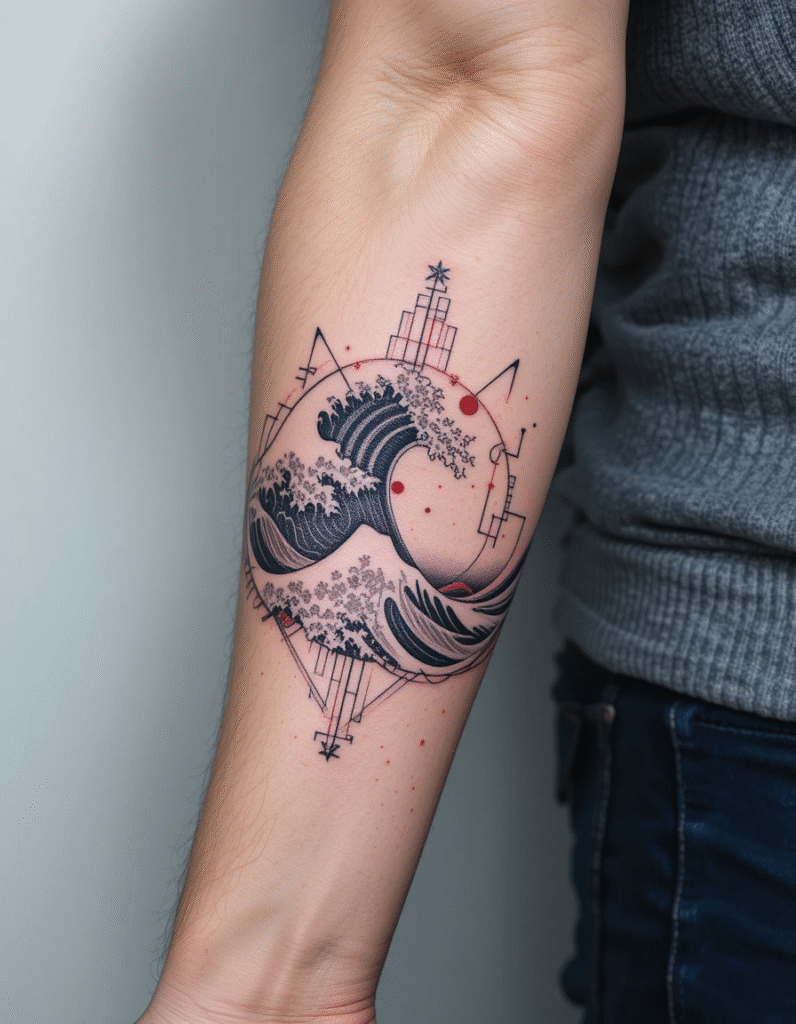Few images in art history are as instantly recognizable as Katsushika Hokusai’s “The Great Wave off Kanagawa.” This iconic woodblock print from the early 1830s has transcended its origins to become one of the most beloved and frequently referenced artworks in the world. In the realm of tattoo artistry, Japanese wave tattoos have emerged as a powerful way to carry this timeless symbol of nature’s force and beauty on the skin.
The Cultural Significance of the Wave
In Japanese culture, waves represent far more than simple ocean movements. They embody the concepts of life’s constant change, the power of nature, and the beauty found in transient moments. The wave symbolizes resilience, adaptability, and the ability to flow with life’s challenges rather than resist them. For many, a wave tattoo serves as a reminder to embrace change and find strength in flexibility.
The traditional Japanese artistic style, known as ukiyo-e (literally “pictures of the floating world”), emphasized the fleeting nature of life and the importance of living in the present moment. When translated into tattoo form, these waves carry forward centuries of philosophical and artistic tradition.
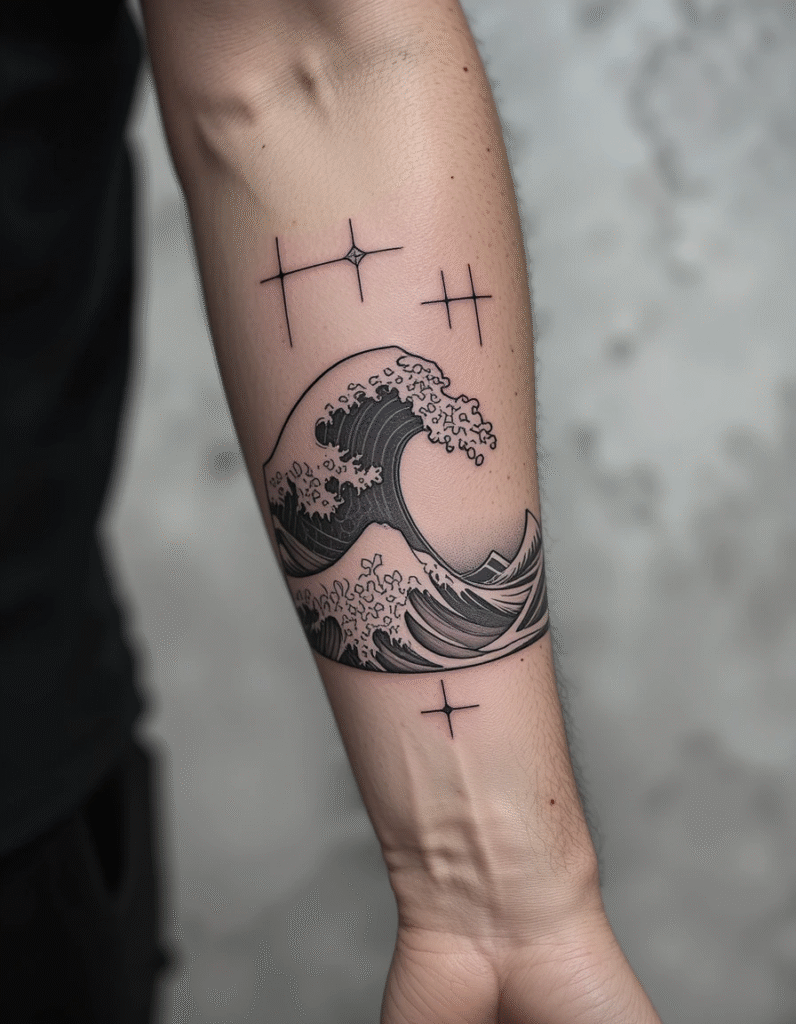
Modern Interpretations of Classic Designs
Today’s tattoo artists have found countless ways to reinterpret Hokusai’s masterpiece while honoring its traditional roots. The beauty of wave tattoos lies in their versatility and the artist’s ability to adapt the design to different styles and personal preferences.
Traditional Hokusai-Inspired Designs: These tattoos stay true to the original woodblock print aesthetic, featuring the characteristic foam patterns that resemble claws or fingers reaching toward the sky. The detailed line work captures the dynamic movement and power of the crashing wave, often accompanied by smaller waves and traditional Japanese elements.
Geometric Fusion: Modern artists have begun incorporating geometric elements into wave designs, creating striking contrasts between the organic flow of water and structured geometric forms. These pieces often feature triangular frames, circular boundaries, or linear patterns that complement the wave’s natural curves.
Minimalist Approaches: Some contemporary interpretations strip the design down to its essential elements, using clean lines and simplified forms to capture the wave’s essence without overwhelming detail. These designs appeal to those who prefer subtle, sophisticated tattoos.
Color Variations: While traditional ukiyo-e prints used limited color palettes, modern wave tattoos often incorporate vibrant blues, teals, and whites to create more realistic water effects. Some artists add unexpected color accents, such as red geometric elements or sunset hues, to create unique personal interpretations.
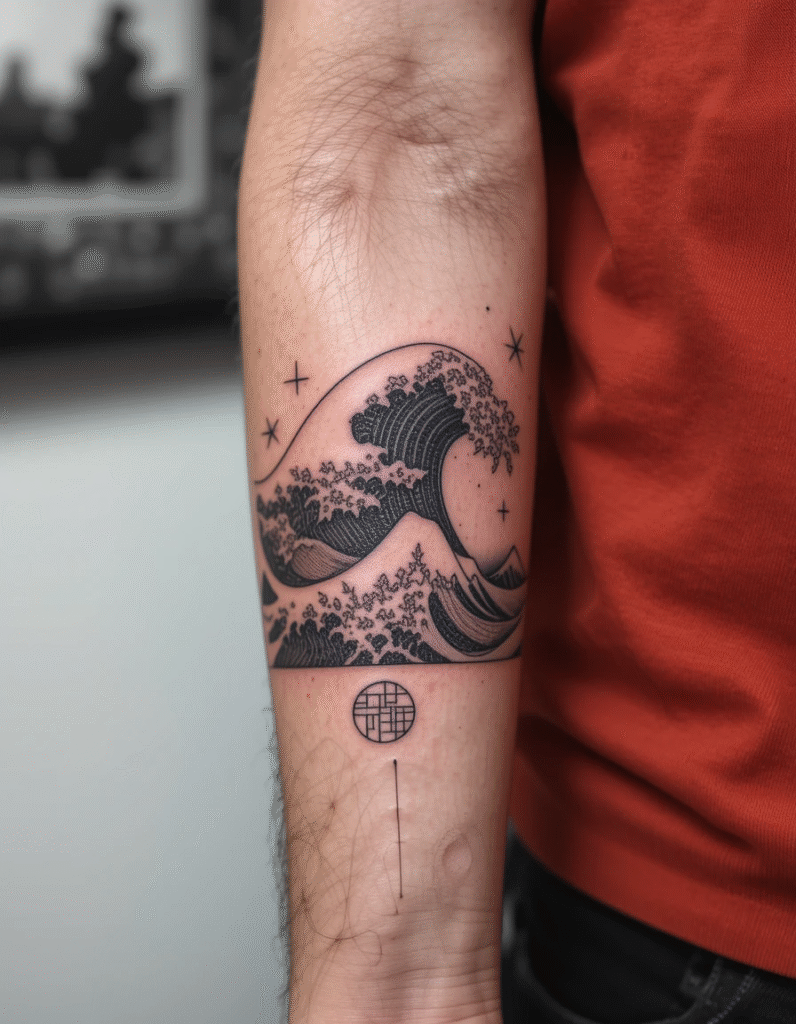
Placement and Composition Considerations
Japanese wave tattoos work beautifully in various placements, each offering different aesthetic opportunities:
Forearm Placement: The natural curve of the forearm complements the wave’s flowing motion, creating a dynamic piece that seems to move with the body. This placement also allows for excellent visibility and detail appreciation.
Circular Compositions: Waves designed within circular boundaries create self-contained pieces that work well on shoulders, backs, or as part of larger sleeve designs. The circular frame emphasizes the cyclical nature of water and life.
Sleeve Integration: Wave tattoos serve as excellent foundational elements for Japanese-style sleeve tattoos, providing movement and flow that can connect other traditional elements like koi fish, cherry blossoms, or dragons.
Back Pieces: Large-scale wave tattoos across the back allow for maximum detail and dramatic impact, creating stunning pieces that showcase the full power and beauty of the design.
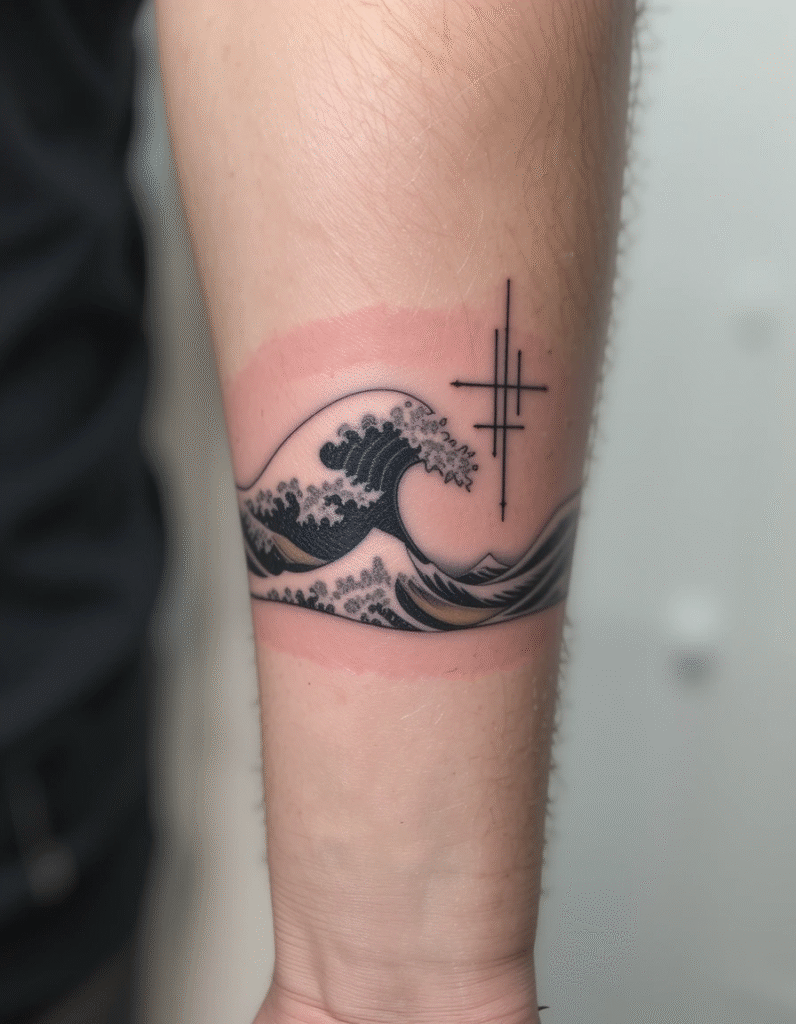
Artistic Techniques and Styles
The execution of wave tattoos requires specific artistic skills and understanding of traditional Japanese aesthetics:
Line Work Mastery: The characteristic foam patterns and wave curves demand precise, confident line work. Artists must understand how to create the illusion of movement and three-dimensional depth through line variation and placement.
Shading and Texture: Traditional Japanese tattoos use specific shading techniques to create depth and movement. The interplay of light and shadow in wave tattoos requires careful planning and execution to achieve the desired dramatic effect.
Negative Space Usage: Effective wave tattoos make strategic use of negative space to enhance the design’s impact. The areas between foam patterns and wave crests are as important as the inked portions.
Symbolism and Personal Meaning
Beyond their aesthetic appeal, wave tattoos carry deep personal significance for many wearers:
Overcoming Challenges: The wave’s power represents the ability to overcome obstacles and emerge stronger from difficult situations.
Connection to Nature: For ocean lovers, surfers, and those who find peace near water, wave tattoos represent their spiritual connection to the sea.
Life’s Impermanence: The Buddhist concept of impermanence is beautifully represented by waves, which are constantly changing yet eternally present.
Strength and Flexibility: The wave’s ability to be both powerful and adaptable serves as inspiration for navigating life’s complexities.
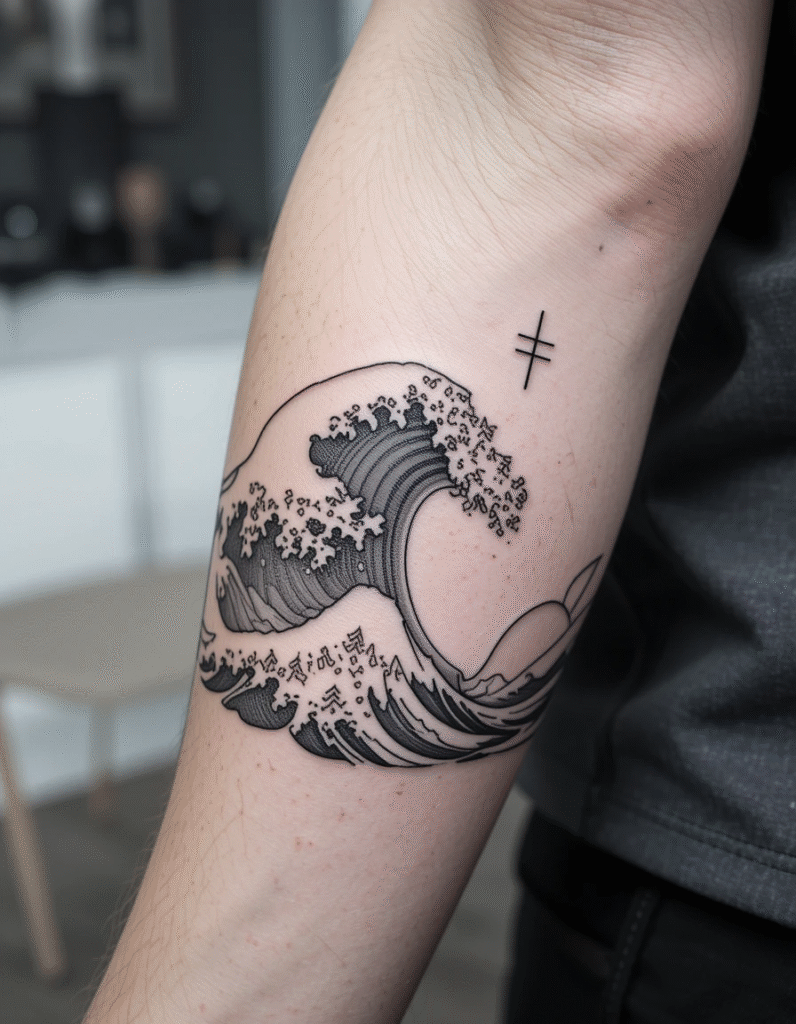
Choosing the Right Artist
Japanese wave tattoos require artists with specific skills and cultural understanding. When selecting an artist, consider their experience with:
- Traditional Japanese tattoo techniques and aesthetics
- Line work precision and confidence
- Understanding of wave movement and water physics
- Ability to create dynamic compositions that flow with body contours
- Respect for the cultural significance of the imagery
Caring for Your Wave Tattoo
The detailed line work in wave tattoos requires careful aftercare to ensure crisp, clean healing. Follow your artist’s specific instructions, protect the tattoo from sun exposure during healing, and use recommended aftercare products to maintain the integrity of the fine details.
The Timeless Appeal
Japanese wave tattoos represent a perfect fusion of traditional artistry and contemporary expression. They offer wearers a way to carry meaningful symbolism while showcasing appreciation for one of history’s most influential artistic movements. Whether rendered in traditional black and grey or enhanced with modern color techniques, these tattoos continue to captivate and inspire.
The enduring popularity of wave tattoos speaks to their universal appeal and the timeless nature of Hokusai’s original vision. In a world of constant change, the wave serves as both a reminder of life’s impermanence and a symbol of our ability to navigate whatever currents come our way. Like the ocean itself, these tattoos possess a power and beauty that never truly fades, making them worthy companions for life’s journey.

